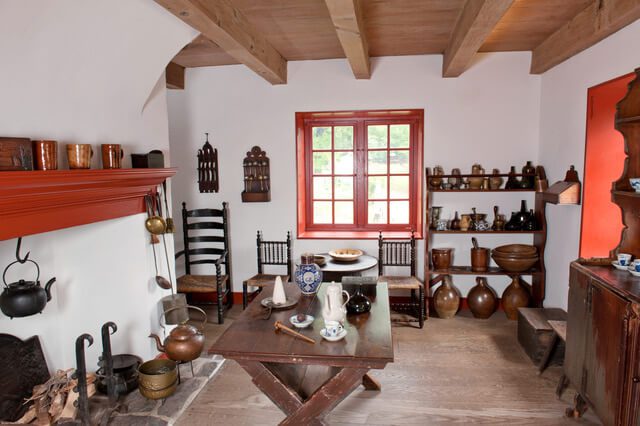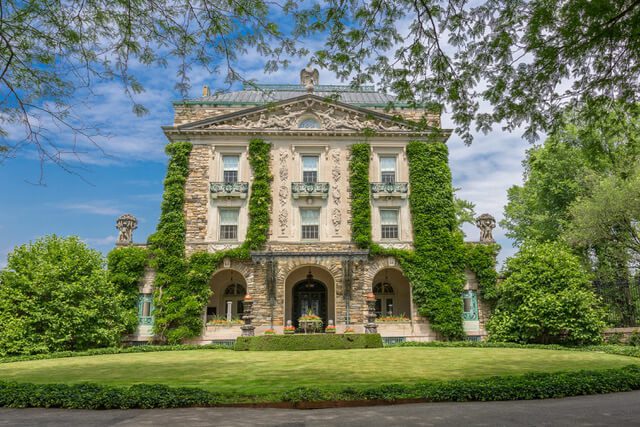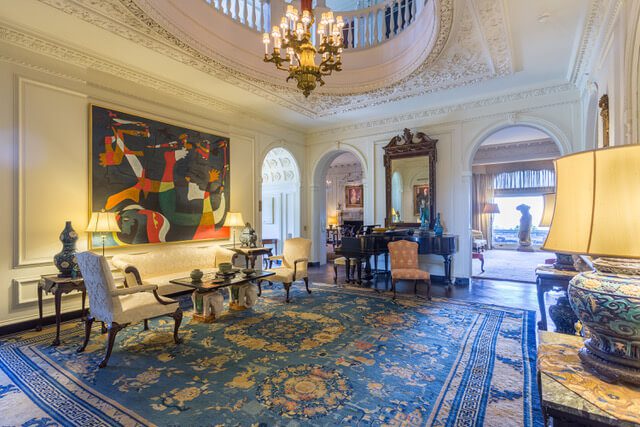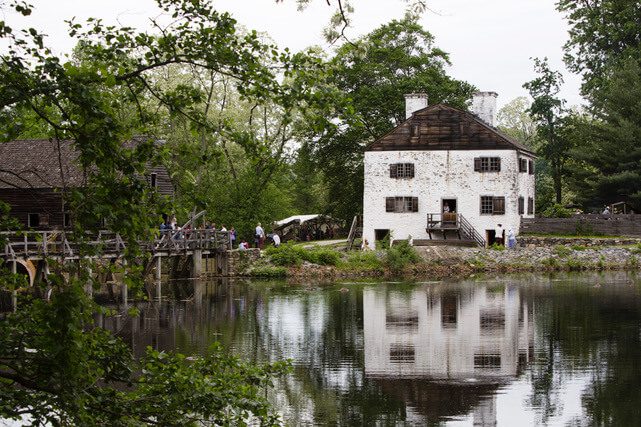Kala gives us a glimpse of history. Her travelogue explores the homes of Frederick Philipse and John D. Rockefeller, extraordinary self-made men, who amassed unbelievable wealth in two different centuries. An exclusive for Different Truths.

I live in the quaint and picturesque village of Irvington, New York, which is nestled on the banks of the Hudson River. The shops on Main Street look as they did in the nineteenth century when this hamlet was built, even though we are a mere forty-minute train ride from the ferocious and pulsating energy of New York City.
Irvington may seem encased in amber, but if we go back in time, so many different voices can be heard over the centuries, within a six-mile distance. The original Wecquaesgeek Indians, the Dutch, the English and finally, the victorious Americans.
The most fascinating of these are the ruthless and unscrupulous self-made men who took no prisoners in their quest for acquiring mind-boggling wealth, each a Jeff Bezos of his time: Frederick Philipse in the 17th century and John D. Rockefeller in the 19th century. The first was the Lord of the Manor of Philipsburg, owning 55,000 acres, while the second was the country’s first billionaire.
History books are often dusty, but these two leap-off the pages and come to life when we walk through their properties…
History books are often dusty, but these two leap-off the pages and come to life when we walk through their properties, whether it is a grist mill or a Georgian mansion.
Our first stop is in the 17th century as we make our way to Philipsburg Manor Upper Mills, once an important commercial and trading center. It belonged to Frederick Philipse, a Dutch immigrant, who came from Holland, in 1653. History says that he was a man with no scruples. He owned slaves, worked with pirates and other unsavory characters to build his empire. In another age, he would have been called a robber baron. His ships brought rum from the West Indies and other goods from Europe and ferried back wheat flour from his mill, among other commodities.
Philipsburg Manor is my favorite site as it is a small, intimate building in a peaceful setting from a bygone age.
Philipsburg Manor is my favorite site as it is a small, intimate building in a peaceful setting from a bygone age. A pond with quacking ducks, an old wooden bridge and a water-driven grist mill greet the visitor. Since this is a living museum, people are wandering around in historical costumes performing their daily activities. A burly miller grinds wheat using the giant stones in the grist mill, while the water wheel churns in the Pocantico river. The smell of flour fills the air. Meanwhile, a woman is churning butter outside. While I explore the overflowing herb garden, the well-fed cows in the barn look on placidly.
When we go inside the home, the guide points out the many signs of extreme wealth, which we would not otherwise recognise. Windows with very expensive small panes of glass, imported furniture from Europe, many candles everywhere and a cone of white sugar resting on the table instead of molasses. All this luxury in a place that the owner visited only occasionally.

And yet, there is a very dark side. There were 23 slaves running the property and the open hearth in the kitchen must have been the scene of many tragedies.
It all ended when his descendant, Frederick Philipse III, sided with the British during the American Revolution.
It all ended when his descendant, Frederick Philipse III, sided with the British during the American Revolution. His entire property was confiscated, and he set sail for England, penniless and blind.
A mere two miles away is the home of John D. Rockefeller, a name that has become synonymous with unimaginable wealth. This robber baron founded the Standard Oil Company, in 1870, and ended up controlling 90% of the U.S. oil refining capacity, cornering the market as if it were a Monopoly game. Born into a poor family, this billionaire owned the richest company in the world.
John D. Rockefeller was a man of great contradictions.
John D. Rockefeller was a man of great contradictions. A devout Baptist with a strong work ethic, he taught Sunday school and didn’t drink, smoke or dance, and yet was totally unscrupulous in his business dealings and ruthless in eliminating his competition. Notoriously thrifty, he donated almost half his fortune to charity, exceeding $500 million. The University of Chicago and the Rockefeller Foundation were a few of the beneficiaries.

Kykuit Exterior Jaime Martorano for Historic Hudson Valley 
Kykuit Music Room
Jaime Martorano for Historic Hudson Valley
I frequently take visitors to see the home of this complex man. It was bequeathed to the National Trust by his grandson, Vice President Nelson Rockefeller, and opened to the public, in 1984. The tour van enters through security gates and goes up a long, winding narrow road, past a lush golf course and a greenhouse. And behind high walls a circular driveway opens up to a gray, stone Georgian mansion, artfully decorated with vine and carved images of Greek gods. It looks surprisingly small from the outside even though it has 40 rooms. Built in 1908, Kykuit, meaning lookout in Dutch, has sweeping views of the Hudson River and the steep cliffs behind, called the Palisades. A fountain with a large marble statue of Oceanus overseeing three river gods, the Nile, the Euphrates, and the Ganges, dominates the entrance to the house.
The first room we enter is John D. Rockefeller’s study, an intimidating room. It is very masculine and formal
The first room we enter is John D. Rockefeller’s study, an intimidating room. It is very masculine and formal with a heavy, carved desk and large oil paintings on the oak-paneled walls, including one of a finance minister. It screams of raw power, and it is easy to imagine him sitting at this desk.
In contrast, the rest of the house is light and airy and splashed with the bright colours of modern art. Four generations of Rockefellers lived here, and they collected exquisite art from all over the world, which they meticulously placed throughout the house and outside as well.
The large music room is the most dramatic of all with its circular opening in the ceiling, called an oculus, high arched doorways, and an embellished ceiling. A Steinway grand piano is tucked against a wall and a huge, colorful painting by Miro dominates the room. The feeling of opulence and elegance is amplified by the ornate elephants holding up a table and Chinese porcelain antiques, all grounded by a muted, blue floral carpet.
In the dining room, a king and heads of state have all sat at the Chippendale-style table under an 18th century English chandelier.
In the dining room, a king and heads of state have all sat at the Chippendale-style table under an 18th century English chandelier. It is a singularly harmonious room even though there are ceramics from Dresden, a seventh century Tang figurine, and modern lamps from Giacometti, all occupying the same space. The colours of the paintings reflect the colours of nature outside as the room opens out to a large terrace.
Given the owner’s views on dancing, there is no ballroom in the mansion.
The gardens are magnificent and diverse. One can wander through a formal garden or a rose garden or walk across the small, stone bridge in the Japanese garden to enter the tea house perched in the middle of a pond. There are also many sculptures to be viewed outside, some by Alexander Calder and Henry Moore.
Attention to detail and a desire for perfection are evident throughout the estate.
Attention to detail and a desire for perfection are evident throughout the estate. To preserve the view, the Rockefellers bought part of the Palisades across the river. The iron flowers on the parapet wall mirror the delicate purple flowers growing on the actual vines. The line between art and reality is so blurred that it is hard to tell if a small bird sitting on a sculpture is real or not.
There is a telling story that a guide once narrated. The chauffeur’s nephew, a young boy, was sweeping the floor of the Carriage House where the carriages and automobiles were garaged. John D. Rockefeller was ready to drive in, but the boy stopped him. The richest man in the world waited patiently until the boy had finished his task and then complimented him on his work ethic. Even robber barons can sometimes surprise us pleasantly at a human level.
Photos sourced by author from Historic Hudson Valley
Feature picture: Tom Nycz for Historic Hudson Valley






 By
By
 By
By
Very evocative article which transported me to the houses of the robber barons
I loved this article. Having visited the Rockefeller estate, I must admit that the descriptions are so vivid that it transported me back there. Thank you.
I live in Irvington and have been to both places. But to my surprise I had a better visit of those places through this article. Amazing! I want to read and experience more through her writing.
Thank you for taking me on a tour of such interesting buildings. Your writing evokes the spirit of each age
Thanks Kala for these succinct descriptions of the lives of these wealthy men. I felt like I was there when you took us on a tour to their dwellings. Really magnificent!!